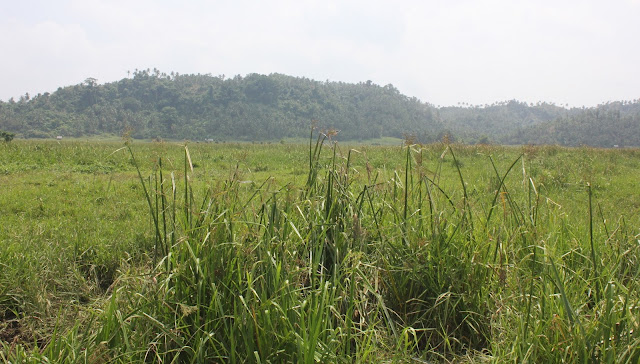Many years ago, the large lowland plains in Can-avid and Dolores were a wonderful sight to behold. By February each year, they appeared as awesome green fields which slowly turned golden as the rice panicles started to ripen.
Aroganga, Dolores, Eastern Samar
Every summer our family and many thousand others from all over the province would migrate for two months to Can-avid or Dolores where the largest rice fields were (and still are) found. Although stressful and tiresome, rice harvesting was always fun and exciting since we had the chance to meet people from many different places. Nights were lively since there were always dancing activities (sarayaw) and pirilipig (making of the rice delicacy pilipig or pinipig by pounding heated immature rice grains).
At the end of the harvest season, many teenagers would go back to their respective home places bringing with them not only many sacks of rice that could last for the whole year, but also life partners (asawa) to last a lifetime.
This rice field in Dolores was very productive in the 1970s, now it is an idle land.
But everything changed dramatically when the insurgency problem started in the 1970s. Many formerly productive rice fields are now idle since their owners have gone somewhere.The large rice fields of Can-avid and Dolores owe their existence to the large rivers which produced the wide flatlands along their banks. They are generally productive because the soils are young and they developed from fertile river (alluvial) sediments.










No comments:
Post a Comment